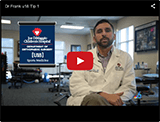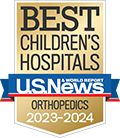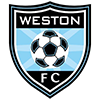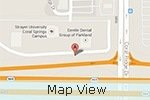Juvenile Spinal Muscular Atrophy (SMA Type 3)
Juvenile spinal muscular atrophy or type 3 muscular atrophy is a milder form of spinal muscular atrophy that typically manifests between 18 months of age and early adolescence.
Children with juvenile spinal muscular atrophy:
- Can stand and walk, but may lose the ability later in life. However, some patients are able to walk well into adulthood.
- Have muscle weakness which progresses very slowly
- Are very bright
- Face problems in balancing leading to falls
- Experience no change in life expectancy
Signs and symptoms of juvenile spinal muscular atrophy include muscle weakness where the legs are much weaker than the arms; scoliosis or curvature of the spine in almost half of patients; sore muscles and symptoms of joint overuse; tremors or fine shaking of the fingers and hands; and swallowing, coughing, and breathing problems at night with increased vulnerability to respiratory tract infections and complications.
Juvenile spinal muscular atrophy is diagnosed before three years with a blood test that identifies gene mutations. If there is a mutation, your doctor my perform a physical examination and order other laboratory tests such as electromyography (measures the electrical activity of muscles), nerve conduction velocity test (assesses how well the nerves are functioning in response to an electrical stimulus) and muscle biopsy, to rule out other neuromuscular conditions.
There is no treatment for juvenile spinal muscular atrophy. However there is a lot that you can do to manage symptoms and improve your child’s quality of life. Symptoms can be managed through respiratory medicine, physiotherapy and occupational therapy. Physical aids such as walkers, bracing, orthotics and wheel chairs may be needed to provide support while walking. In addition, physical activity, such as swimming and hydrotherapy may be recommended.
-
Personalized Physical Therapy Puts Bryant Back on the Court
Bryant could hear the whistles blowing as he walked by the gymnasium.
View more -
No off-season for sports injuries
As a new season of school sports and youth leagues gets underway,
View more -
Student Athletes Benefit from Individualized Treatment at U18 Sports Medicine
Becoming involved in a sport is one of the healthiest things that a child can do.
View more -
For young athletes, injuries need special care
More programs are using procedures and surgical techniques tailored for kids.
View more -
Dr Frank u18 Tip 1
 View more
View more -
Segment U18 Tip with Dr Frank 1
 View more
View more -
Dr. Frank’s 2010 WQAM high school football game halftime interviews
View more




 Menu
Menu






 In The News
In The News Hollywood Office
Hollywood Office

![[U18] Sports Medicine](https://www.kidbones.net/wp-content/themes/ypo-theme/images/u18-sports-medicine-performing-arts-logo.png)












